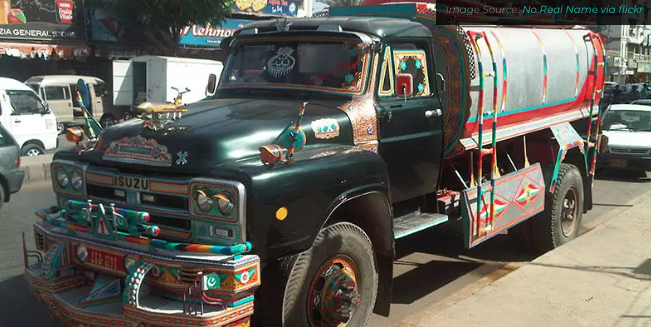Profiteering Water Trucks
Published on by Water Network Research, Official research team of The Water Network in Case Studies
When water supplies run short, all too often unscrupulous dealers provide the only source of water to the poorest
It’s a perennial story: Populations grow. Their activities deplete vital supplies of fresh water. Then climate change brings drought for a one-two punch. What do you do when there’s simply no water left? Many countries, especially in South Asia, the Middle East, South America, and sub-Saharan Africa, are turning more and more to profiteering, privately owned water tankers for a quick fix. But their hyper-inflated prices don’t come with any safety guarantees.

Water tanker trucks are common in the developing world, so the poor, who are least able to afford high prices, are disproportionally forced to pay them. A 15-city World Resources Institute (WRI) study concluded that prices charged by tanker trucks generally are 10 times higher than for piped water. In Mumbai, they are 52 times higher than usual.
The World Health Organization classifies tanker truck water as unimproved water, and the trucks often deliver disease along with the water. Customers are known to suffer skin problems and intestinal illness, so not only are the poor forced to pay unaffordable prices, they miss essential days of work.
Unethically sourced water of questionable quality is being sold at astronomical prices and the public is objecting.
Private tanker trucks are proliferating at an alarming rate in Pakistan, Nigeria, Nepal, India, Bangladesh, Bolivia, Ecuador, Jamaica, and more, filling up with any available water source. In India, some residents of a village outside Chennai recently tried to blockade outside tanker operators after they drilled their own bore holes and seized the village’s groundwater. Lakes have been drained. The tankers have even been known to take water from swimming pools.
Preparing for Water Crisis
Too few regions adequately prepare for a crisis until one is upon them and predatory tanker trucks find a place. In an area with limited economic resources, however, announcing costly upgrades can be difficult.
But when it comes to getting maximum water efficiency out of water systems, the choice often is pay now or pay later. The maxim is true not just economically but politically. Constituencies rarely want to hear that water prices must rise, but early inaction may lead to citizens having to pay astronomical tanker prices.
In a dry climate, it no longer makes sense to use water just once and discard it. Today’s water reuse systems efficiently turn sewage into safe, high-quality effluent that can be used for agricultural irrigation or purple pipe applications like dust reduction, toilet flushing, and street cleaning.
Modern financing models, combined with advanced technology, have made solutions more viable and available throughout the developing world.
At the far end of spectrum, direct potable reuse and zero liquid discharge systems can turn sewage back into drinking water with virtually no waste. Resource recovery systems can even generate the energy to power themselves and create positive revenue streams.
Media
Taxonomy
- Community Supply
- Manual Water Supply Systems